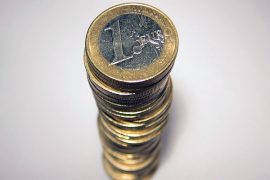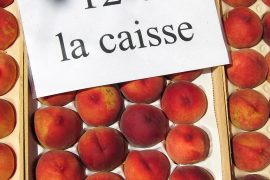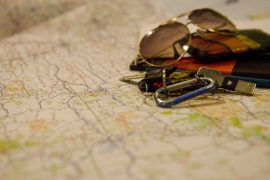t’s summer. It’s hot. I’m busy with 9 million things. And so today, I bring you an excerpt from my book, Math for Grownups. If you’re wondering how to figure out the best vacation deal for you, read through this example. A little bit of planning–and math!–can help you relax, while you’re saving some cash.
Going on vacation means packing, finding someone to take care of Fido, and taking some time off from work. It also means charging some pretty hefty items on your credit card.
The finances of vacationing can boggle the mind. And even with online trip planners and the ability to comparison-shop with the click of a mouse, planning a vacation can make you ready for another one.
Red and Emily are ready for their second honeymoon. After 25 years of marriage, two kids, and the stress of everyday life, they deserve it. So Red is going to surprise Emily on their anniversary with a 1-week getaway to Aruba.
For 5 years, he’s been secretly putting away a little cash here and there. He’s got $7,500 saved up, and that’s just enough to whisk his bride away for some R & R. (That’s romance and rest.) Red has even arranged for Emily to take some time off from work.
But first he’s got to figure out how he can spend his vacation nest egg. After Emily goes to sleep, he cruises trip-planning websites looking for the best deal. And he’s very quickly overwhelmed.
There are all-inclusive packages, non-inclusive packages, romance packages, and adventure packages. Some include the cost of flights and drinks and meals. Others offer some combination of these features.
It’s going to be a long night.
Within an hour or so, Red has some options scribbled down on a piece of paper. He has chosen their destination—a secluded resort with 5-star dining, access to a private beach, a spa, and great online reviews. Now it’s on to the pricing. There are a number of options:
Because two of his options don’t include airfare, Red prices out some flights. He finds out that he can get two round-trip tickets for about $925. Not bad!
If he chooses a non-inclusive option, he’ll need to pay for meals, drinks, and activities. And that requires more research. Red wonders whether there is a good way to estimate these.
He considers meals first. The resort includes a free breakfast, so he won’t need to include that in his calculations. But unless they’re going with the all-inclusive option, they will have to buy lunches and dinners. Red does some more research and comes up with the following numbers:
Average lunch → $25/person
Average dinner → $60/person
Average lunch → $25/person
Average dinner → $60/person
And because there are two of them, and they’ll be there for 7 full days:
Lunches: $50 per day for 7 days = $350
Dinners: $120 per day for 7 days = $840
It looks like the cost of meals will be $350 + $850, or $1,190.
He and Emily aren’t big drinkers, so that’s pretty simple to figure out. Assuming that the cost of drinks is pretty high, he guesses $25 a day for two fancy cocktails, and if they have a nice bottle of wine with dinner each night, that’ll run them about $200 for the week.
($25 • 7) + $200 = $375
Now, Red thinks about activities. A day on a sailboat and some snorkeling sounds great ($450). Then he’d like to book a few spa treatments for Emily ($500).
$450 + $500 = $950
Because all of the prices so far have included tax, Red doesn’t no need to do any math for that. But he will need to tip the baggage carriers, taxi drivers, servers, and spa staff. Red takes a shot in the dark, and guesses $350 for all gratuities. (That could be too much, but it’s probably not going to be too little.)
This is a ton of information, and Red’s legal pad looks like a football coach’s playbook. He’d better get organized if he wants to book this trip and get some sleep. Red decides to make a list.
Package
All-inclusive = $7,225
Romance package: $6,150 (package) + $925 (air) = $7,075
Hotel + Travel: $4,340 (hotel/air) + $1,915 (meals/drinks/tips) + $950 (activities) = $7,205
A la carte: $3,450 (hotel) + $925 (air) + $1,915 (meals, etc.) + $950 (activities) = $7,240
Now Red can really consider his options.
The most expensive choice is à la carte, but all of the totals are pretty darned close. If he goes by price alone, the clear winner is the Hotel + Travel package. But that requires him to handle everything on his own—and honestly, he’s ready for bed.
On the other hand, the Romance package is only $70 more. And right now, that extra bit of cash seems worth it. Red pulls out his credit card and books their flights and vacation packages. Then he snuggles up next to Emily and savors his little surprise!
How have you found the best travel deals? Share your ideas in the comments section.









